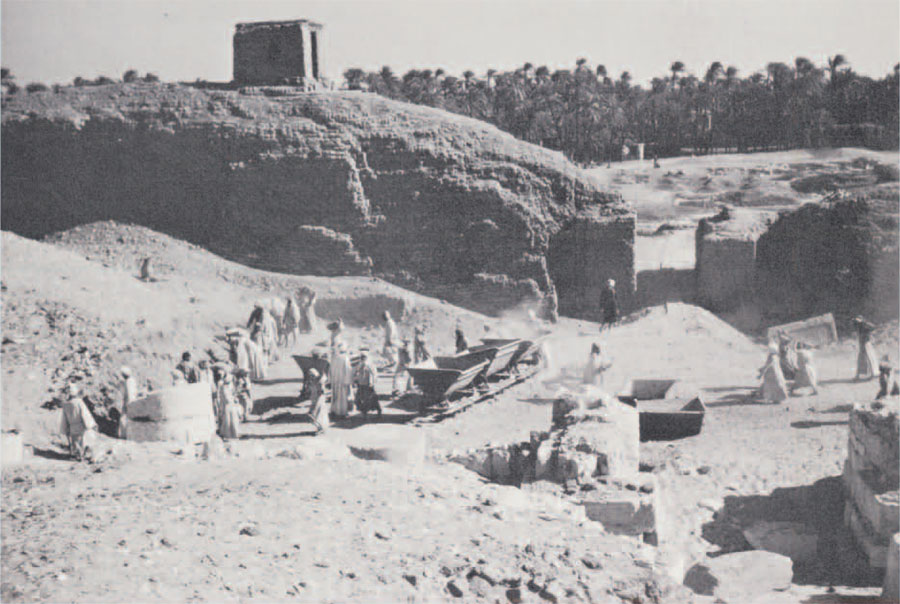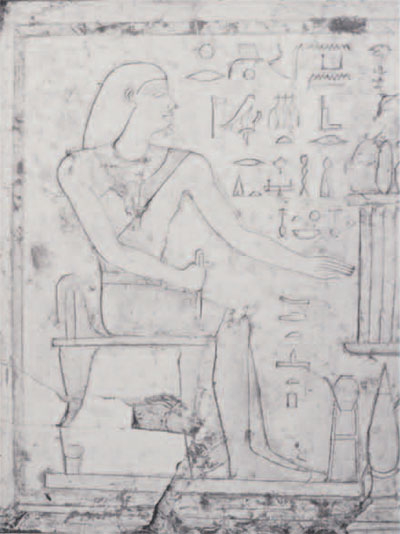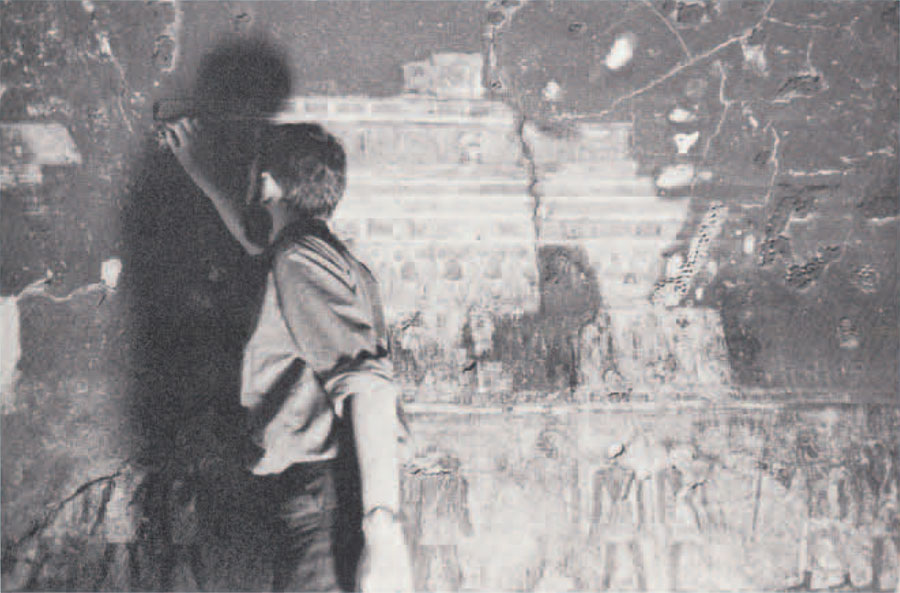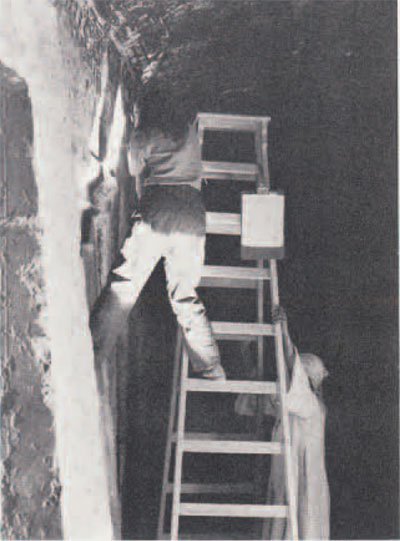
The University Museum has at present three field expeditions active in Egypt, continuing a tradition of Egyptological research begun by the Museum in 1906. The current expeditions cover a wide range of interests: excavation, epigraphy, the cleaning and restoration of damaged monuments, and research into the application of computers to the storage and analysis of archaeological and epigraphic data.

The success of our Egyptian expeditions has been due in large part to the University Museum’s keen interest in Egyptological research and to the enthusiasm and dedication for the people directly involved; insufficient space precludes their being listed here, but their contribution is fundamental. Two other factors have been most important. Firstly, the Egyptian Government has not only issued permits for our work in Egypt but its various branches, especially the Ministry of Culture and the Antiquities Service, have always been most cooperative in facilitating our work. This is an appropriate point to record our appreciation and gratitude to the Minister of Culture, Dr. Okasha, the Undersecretary, Mr. Issawy, and the Director-General of the Antiquities Service, Dr. Mukhtar. These gentlemen and their officials have been continually courteous and helpful in assisting us to arrange our work in accordance with Egyptian laws and customs.
Secondly, the expeditions have been generously financed from several sources. For dollar funds all three draw on the Eckley B. Coxe, Jr. Fund of the University Museum; the Abydos project also receives support from a Bollingen Foundation grant to the Peabody Museum at Yale and the Akhenaten project has received contributions from Mrs. Arthur Parker, Jr., Ray Smith, and James Delmege. Our major support however consists of generous grants of PL 83-480 (Counterpart) funds made through the United States Department of State and the Smithsonian Institution.
A brief survey of our activities will illustrate the historical range of the Museum’s work and the variety of problems we are investigating. Excavations at Abydos are being carried out by a joint expedition of the University Museum and Yale University, under the co-direction of Professor W.K. Simpson of Yale and myself. This site had been of major importance in ancient Egypt since the early third millennium B.C. when the kings of the First Dynasty constructed their tombs there. By the second millennium B.C. Abydos had become the great cult center of the funerary god Osiris and throughout Egyptian history large temples, royal cenotaphs, and thousands of private graves were built on the site (see Expedition, Vol. 10, No. 1). Despite much previous work, the greater part of the site has not been scientifically examined and although our selected concession is comparatively small (950 x 800 meters) it seems to be of great historical importance. Our principal aims are to explore the remains inside the major temple area, the “Osiris Temple Enclosure”; to examine the stratigraphical sequence in the surviving portion of the town mound; and to investigate the large cemetery on the west, in particular several mud-brick structures of the First and Second Dynasties, which previous excavations and recent studies have shown to be conceptually linked with the Royal Tombs, situated outside our concession.

Two seasons have already been completed (January to May, 1967 and February to April, 1968) and a minimum of four more is planned. Part of this time was devoted to building an expedition house, but already a large part of a structure called the “Porta; of Ramesses II” (1304-1237 B.C.) has been excavated. It is now seen to be not a ceremonial gateway, as once thought, but a temple which was subsequently largely demolished; numerous and later mud-brick tombs surround it. Some eight hundred objects, many inscribed, have been discovered, including well preserved funerary stelae, fragments of a royal colossus, large numbers of hieratic and demotic ostraca, and a variety of other objects.
The problems of data-retrieval and data-analysis presented by the continually accumulating records of any long-term excavation have made it necessary for us to develop, in conjunction with the Near Eastern Section of the Museum, a computer retrieval program which will enable us not only to obtain information on an object in a matter of seconds, but also to arrange our data in possibly significant patterns of material, shape, provenance, etc. The program itself is now complete and the Abydos records are currently being prepared for storage and analysis.
Another of the University Museum’s interests is preparing and completing previous Museum work in Egypt for final publication. It was for this reason as well as the intrinsic interest of the material that the Dra Abu el-Naga project was organized by myself and Mr. Lanny Bell of the Egyptian Section. The epigraphic work is being supervised by Professor Cerny, Visiting Professor of Egyptology at the University of Pennsylvania, and the actual field work (now covering two seasons, February-April, 1967 and January-April 1968) has been directed by Lanny Bell. Due to his efforts the project is now firmly established (see Expedition, Vol. 10, No. 2).

At Dra Abu el-Naga in 1921-23 a Museum expedition under Clarence S. Fisher cleared and planned twenty-two decorated tombs, mostly Ramesside in date (Nineteenth to Twentieth Dynasties, about 1314-1085 B.C.). Very few tombs of this period have been fully published. This particular group contains tombs of high officials, including three High Priests of Amun and two Viceroys of Kish, whose inscriptions are of historical interest. The archaeological record of Fisher’s expedition was good, but as the ceilings and walls of many tombs had been obscured by smoke and dirt centuries ago the epigraphic record was very incomplete. Mr. Bell and his assistants have now almost completed the copying and collating of the texts in the tomb of Bekenkhons, High Priest of Amun (Tomb 35), and many of its wall and ceiling surfaces have been cleaned, increasing the legibility of the texts and revealing formerly hidden patterned decoration and elaborately painted scenes. Debris has been cleared from the tomb of Nebwenenef, High Priest of Amun (Tomb 157), in preparation for its study, and the entrances of the tombs of Setau (Tomb 289) and Anhotep (Tomb 300), Viceroys of Kush, have been prepared for metal doors which will make them accessible for study as well as assuring their safety. Electricity has been laid on to illuminate the work and a number of other strengthening and conserving tasks have been undertaken.
In the Akhenaten Temple project Mr. Ray Smith has undertaken an interesting and challenging task, involving a sophisticated use of computers (see Expedition, Vol. 10, No. 1). A great temple was built in Thebes, near the temple complex of Karnak, by the “heretic” king Akhenaten (1367-1350 B.C.). The scenes and texts on the temple walls, and probably its plan, reflected the effort of this pharaoh to emphasize the worship of a single god, symbolized by the “Aten” (Sun-disc), in opposition to the multiplicity of cults and gods which characterized Egyptian religion. This monument is therefore very important for the study of religion and art at an unusual moment in Egyptian history. Unfortunately, in the reaction after Akhenaten’s death his Karnak temple was demolished and the blocks re-used for foundations and fillings in other structures.
During restoration work by the Antiquities Service over the last fifty years at Karnak thousands of these re-used blocks have been recovered and stored in sheds, where they now present a baffling problem to the Egyptologist. Many of the blocks bear part of a scene or text of which they were once part, but as the originally adjoining blocks are now scattered amongst blocks from other scenes in the store rooms, the problem of re-assembling the decoration of the temple may be compared to a gigantic jig-saw puzzle. Fortunately the blocks, all of the same size, are stored in “walls” with the decorated face outwards, and Mr. Smith conceived the idea of photographing each block, preparing detailed descriptions based on the photographs, and processing the data through a computer program which brings the number of possible joining blocks down to a mere handful. This enormous comparative effort, virtually impossible for an individual scholar, is done with great speed by the machine. The ultimate purpose is to restore the scenes and texts in the form of photographic mosaics and line drawings; actual reconstruction is not proposed as it is unlikely that sufficient blocks have yet been discovered to justify this.
The Akhenaten Temple project commenced in October, 1966 under Mr. Smith’s direction, and has been working continuously since then. Excellent photographs, taken largely by James Delmege, have been studied by a staff of capable young Egyptian Egyptologists in Cairo, and International Business Machines in Cairo has generously donated computer time and services. To date some 25,000 blocks have been photographed and described and although the process of analysing the data has only begun, one hundred and fifty groups of adjoining blocks have already been assembled. Several noted Egyptologists have agreed to study the final results and the processing of further blocks will continue. By the end of 1968 our knowledge of this unusual building will be greatly extended.
